One of the great, largely untold adventure stories of late antiquity is the journey to the East, from Egypt’s Red Sea ports, across the open ocean for 40 days and 40 nights, to the legendary entrepôt of Musiris, on India’s southwestern or Malabar coast, in what is now modern state of Kerala. This was a great feat of navigation, a technological leap forward comparable to the discovery of the Americas or Francis Drake’s circumambulation of the globe.
Mysterious Musiris
This maritime trade reached a peak during the time of Jesus, necessitating the construction of a small Greco-Roman merchant colony to manage the extensive trade between India and the Roman Empire. This colony was sufficiently large to justify the building of a Roman temple, which is clearly shown on ancient maps. The precise location of Musiris has hitherto been one of the secrets of the classical world.
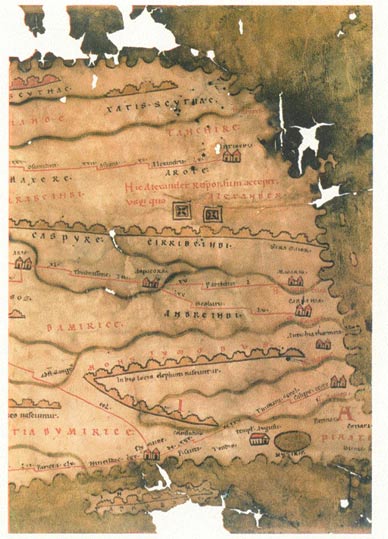
Detail from Tabula Peutingeriana, source: Annalina Levi and Mario Levi. Itineraria picta: Contributo allo studio della Tabula Peutingeriana (Rome: Bretschneider) 1967. Schematic representation of India with Roman temple shown.
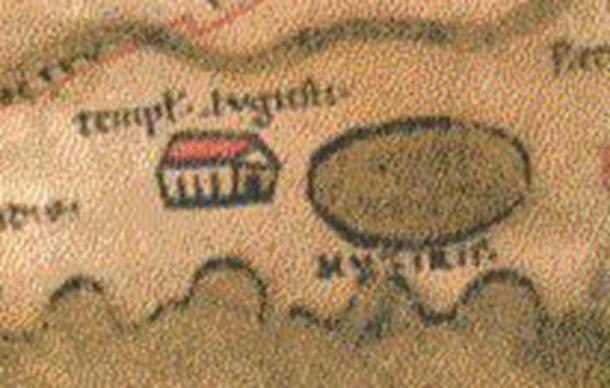
Inset of map Tabula Peutingeriana showing Roman temple.
Religion is the strange cargo of maritime trade. This area of India is very cosmopolitan. It was the port of disembarkation for Christians, Jews, Muslims and other Near Eastern peoples, who still have a significant presence in India. The Egyptian goddess Isis is famously the patroness of the sea, the protector of mariners. The Greek captains of the Roman trade galleons undoubtedly worshiped her.
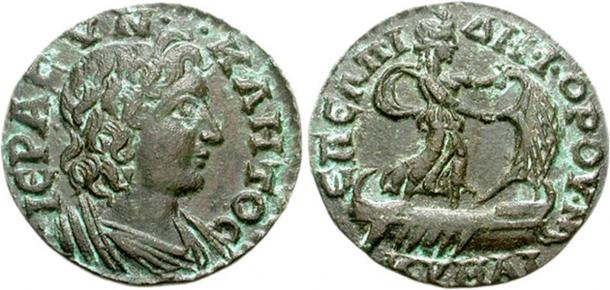
Image of Isis Pelagia “Isis of the Sea” on a Roman coin. Forchner G (1988) Die Münzen der Römischen Kaiser in Alexandrien, Frankfurt. ( www.coinproject.com)
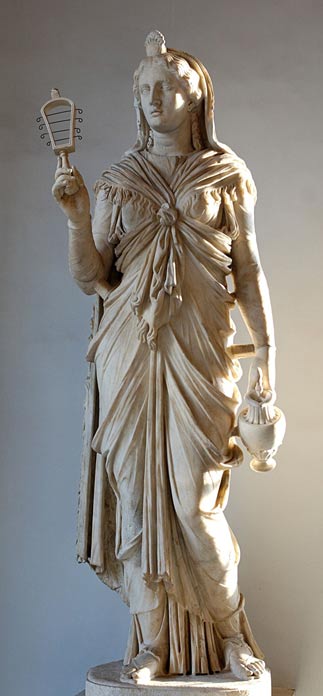
Roman Isis holding a sistrum and oinochoe and wearing a garment tied with a characteristic knot, from the time of Hadrian (117–138 AD). ( Public Domain )
The revealing of the goddess Isis in Indian culture is the combined work of several eminent scholars. Initially it was the identification of Pattini as a veiled goddess, the only one in Hindu mythology, that led scholars such as Dr Richard Fynes to hypothesize a Near Eastern connection. Actually Isis was not veiled throughout most of her history but she was when her cult was transferred to India.
The late Professor Kamil Zvelebil also revealed much about the maritime trade between the ancient Near East and South India. My research for Isis, Goddess of Egypt & India , further exposed the similarities between the classical mystery cult and the mythology of the Buddhist/Jaina goddess Pattini.
- Archeologists discover Mythical Tomb of Osiris, God of the Dead, in...
- Eight More Statues of the Ancient Egyptian Goddess Sekhmet Found in...
- Maat: The Ancient Egyptian Goddess of Truth, Justice and Morality
Distinguished Princeton anthropologist Gunanath Obeyesekere undertook extensive fieldwork, recording the folk songs and myths of the region. Almost immediately he recognized how they almost all contained a mythology, unique in India, in which a dead god is resurrected by the magical power of his veiled goddess wife.
Isis, and the Resurrection of Osiris
The Egyptian version of this myth concerns the internecine struggle for power within its most prominent divine family. These are the five famous children of Sky-mother Nuit and Earth-father Geb viz: Isis, Osiris, Seth, Nephthys and Horus. Like Biblical Cain and Abel, Seth kills his brother Osiris in a jealous rage then dismembers and hides his body. Because Osiris has no adult successor, his brother Seth can take his throne. In the drama, Isis searches for and eventually finds the decayed body of her dead husband. She revives Osiris, which gives us the archetypal and earliest version of the myth of the dying and resurrecting god.
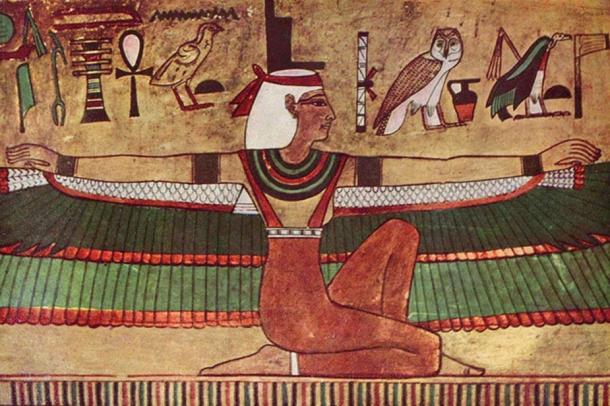
Isis depicted in Egypt with outstretched wings (wall painting, c. 1360 BC) ( Public Domain )
But the reward of her work does not last, the Resurrection of Osiris is a temporary respite, just enough time for the couple to engender a magical son who will eventually grow, protected by his mother, to avenge his father and take his rightful role on the throne of Egypt.
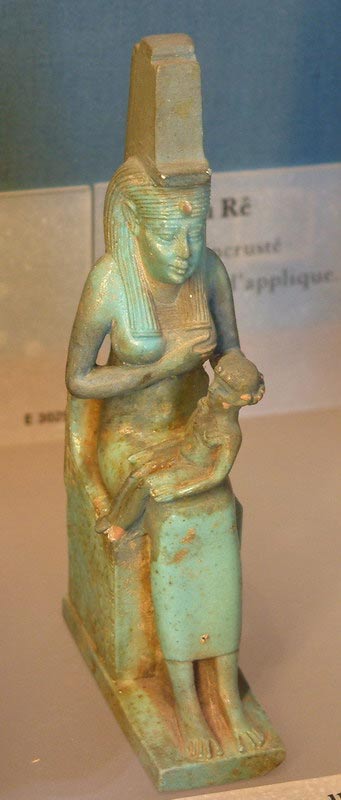
Isis nursing Horus (Louvre). ( CC BY-SA 1.0 )
Now consider this traditional song, recorded by Obeyesekere. It is derived from Tamil Nadu’s national epic poem, the Shilappattikaram: the tale of the Anklet:
“She created an ambrosia pond,
Wetted the [veil] with its water,
Placed a hand on Palanga’s head,
And told him to get up.
As if lying in a bed,
Deep in cool sleep,
By the influence of Pattini,
The Prince rose joyous.”
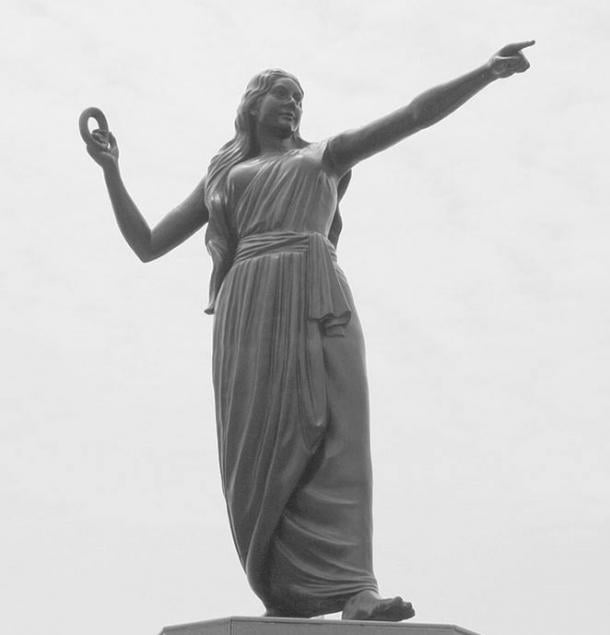
Kannagi is the central figure of the epic Silapathikaram and is worshiped as goddess Pattini in Sri Lanka. Statue in Marina Beach, Chennai. ( CC BY 2.0 )

You need to be a member of Saviors Of Earth to add comments!
Join Saviors Of Earth